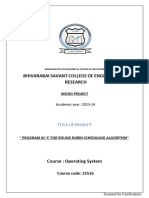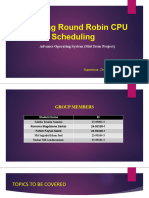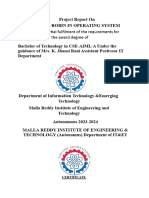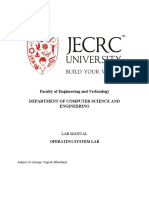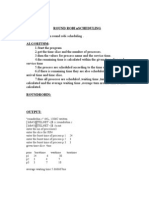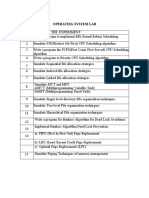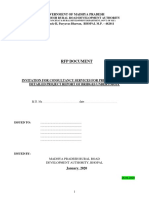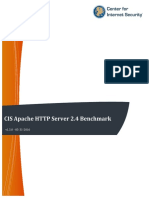0% found this document useful (0 votes)
15 views12 pagesOSY Report
The document is a micro-project report on implementing the Round Robin scheduling algorithm in C, submitted by students as part of their Diploma in Computer Technology. It outlines the rationale, aims, methodology, and outcomes of the project, emphasizing the algorithm's fairness in CPU time allocation and its applications in operating systems. The report also includes a literature review, resources used, skills developed, and references for further reading.
Uploaded by
Jay KadlagCopyright
© © All Rights Reserved
We take content rights seriously. If you suspect this is your content, claim it here.
Available Formats
Download as PDF, TXT or read online on Scribd
0% found this document useful (0 votes)
15 views12 pagesOSY Report
The document is a micro-project report on implementing the Round Robin scheduling algorithm in C, submitted by students as part of their Diploma in Computer Technology. It outlines the rationale, aims, methodology, and outcomes of the project, emphasizing the algorithm's fairness in CPU time allocation and its applications in operating systems. The report also includes a literature review, resources used, skills developed, and references for further reading.
Uploaded by
Jay KadlagCopyright
© © All Rights Reserved
We take content rights seriously. If you suspect this is your content, claim it here.
Available Formats
Download as PDF, TXT or read online on Scribd
/ 12
You might also like
- No ratings yetRaj Os Lab Manualjkkkkkkkkkkkkkkkkkkkkkkkkkkkkkkkkkkkkkkkkkkkkkkkkkkkkkkkkkkkkkkkkkkkkkkkkkkkkkkkkkkkkkkkkkkkkkkkkkkkkkkkkkkkkkgggggggggggggggggggggggggggggggggggggggggggggggggggggggggggggggggggggggggggggggggggggggggggggggggggggggggggggggggggggggggggggggggggggggggggggggggggggggggggggggggggggggggggggggggggggggggggg11321F005511321F005511321F005511321F005511321F005511321F005511321F005511321F005511321F005511321F005511321F005511321F005511321F005511321F005511321F005511321F005511321F005511321F005511321F005511321F005511321F005511321F005511321F005511321F005511321F005511321F005511321F005511321F005511321F005511321F005511321F005511321F005511321F005511321F005511321F005511321F005511321F005511321F005511321F005511321F005511321F005511321F005511321F005511321F005511321F005511321F005511321F005511321F005511321F005511321F005511321F005511321F005511321F005511321F005511321F005511321F005511321F005511321F005511321F005511321F005511321F005511321F005511321F005511321F005511321F005511321F005511321F005511321F00551132116 pages


